19 Fascinating Photos From Our History's Vault
Kenneth Coo
Published
12/27/2017
in
wow
Historical photos you have probably no idea about.
- List View
- Player View
- Grid View
Advertisement
-
1.
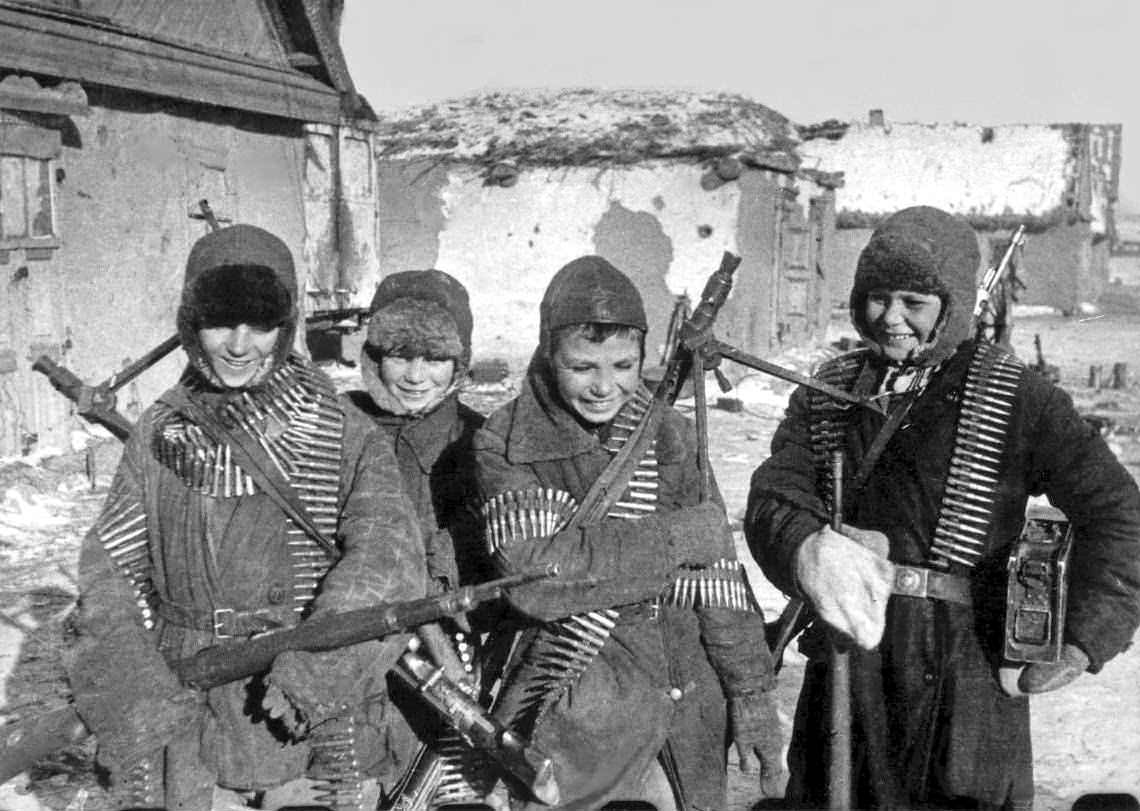 Children play with captured German weapons after the Battle of Stalingrad in Russia in 1943. The biggest battle in human history changes the course of WWII, with the Soviet Union eliminating the entire German Army Group B. The city became a symbol and the battle turned personal among former allies Hitler and Stalin in the war, even though its key location was also important for the German offensive in taking the oil fields south of the city. This made both sides throw more and more soldiers into the battle. Much of the population was killed, as the Soviets stopped evacuations when the Germans got a foothold in the city. These boys most likely are orphans, and could have been pressed into the Soviet Army by the wars end.
Children play with captured German weapons after the Battle of Stalingrad in Russia in 1943. The biggest battle in human history changes the course of WWII, with the Soviet Union eliminating the entire German Army Group B. The city became a symbol and the battle turned personal among former allies Hitler and Stalin in the war, even though its key location was also important for the German offensive in taking the oil fields south of the city. This made both sides throw more and more soldiers into the battle. Much of the population was killed, as the Soviets stopped evacuations when the Germans got a foothold in the city. These boys most likely are orphans, and could have been pressed into the Soviet Army by the wars end. -
2.
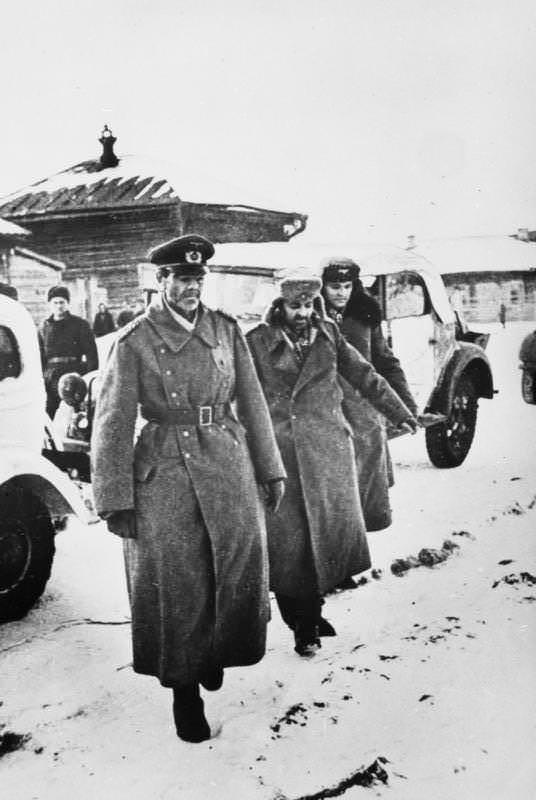 This is the overall commander of the German Army Group B Friedrich Paulus after surrendering to the Soviets to end the Battle of Stalingrad in 1943. Once the Germans had control of 90% of the city, the Soviets counterattacked the flanks outside the city, and cut off and surrounded the entire German Army Group B. Paulus wanted to attempt a breakout, but Hitler ordered against it, telling them they could fly in supplies while they organized a relief. The Soviets used that to strengthen their lines, engulf the Germans, and destroy them. 250,000 Germans were surrounded, with just 91,000 surrendering, and just 5,000 saw Germany again, with most dying in Soviet camps. Hitler even promoted Paulus to Generalfeldmarschall, knowing no German or Prussian of such a high rank had ever been captured before. Hitler expected Paulus to commit suicide, but Paulus said screw that and surrendered. He even spoke against the Nazi's and was a witness for the prosecution of key Nazi officials at the trials at Nuremberg.
This is the overall commander of the German Army Group B Friedrich Paulus after surrendering to the Soviets to end the Battle of Stalingrad in 1943. Once the Germans had control of 90% of the city, the Soviets counterattacked the flanks outside the city, and cut off and surrounded the entire German Army Group B. Paulus wanted to attempt a breakout, but Hitler ordered against it, telling them they could fly in supplies while they organized a relief. The Soviets used that to strengthen their lines, engulf the Germans, and destroy them. 250,000 Germans were surrounded, with just 91,000 surrendering, and just 5,000 saw Germany again, with most dying in Soviet camps. Hitler even promoted Paulus to Generalfeldmarschall, knowing no German or Prussian of such a high rank had ever been captured before. Hitler expected Paulus to commit suicide, but Paulus said screw that and surrendered. He even spoke against the Nazi's and was a witness for the prosecution of key Nazi officials at the trials at Nuremberg. -
3.
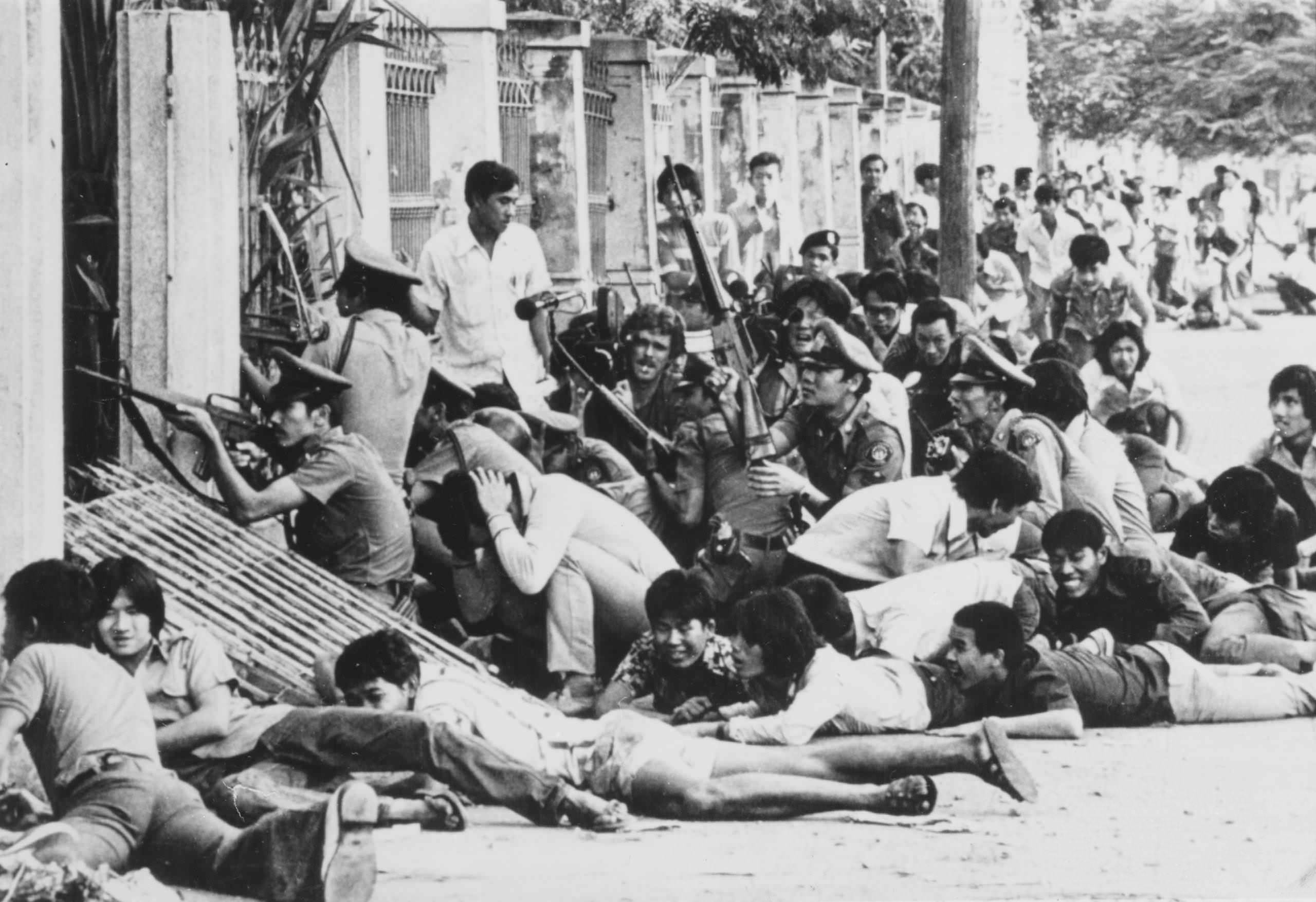 An angry mob accompany soldiers as they prepare to storm a school during the Thammasat University massacre in Bangkok, Thailand in 1976. The students had been protesting the return of exiled military dictator Thanom Kittikachorn, and even put on a play mocking him. The army and Kittikachorn supporters then surrounded the school, trapping 6,000 students. They then stormed the school, and killed up to 100 students, wounding another 200, if not more. They then hung some of the bodies, and used them as human pinatas (see part 10). Interesting enough, as you can see, there are at least 3 members of a news crew in this picture. The army and mob did not stop them from reporting the events, which is why we have such images documenting such a massacre.
An angry mob accompany soldiers as they prepare to storm a school during the Thammasat University massacre in Bangkok, Thailand in 1976. The students had been protesting the return of exiled military dictator Thanom Kittikachorn, and even put on a play mocking him. The army and Kittikachorn supporters then surrounded the school, trapping 6,000 students. They then stormed the school, and killed up to 100 students, wounding another 200, if not more. They then hung some of the bodies, and used them as human pinatas (see part 10). Interesting enough, as you can see, there are at least 3 members of a news crew in this picture. The army and mob did not stop them from reporting the events, which is why we have such images documenting such a massacre. -
4.
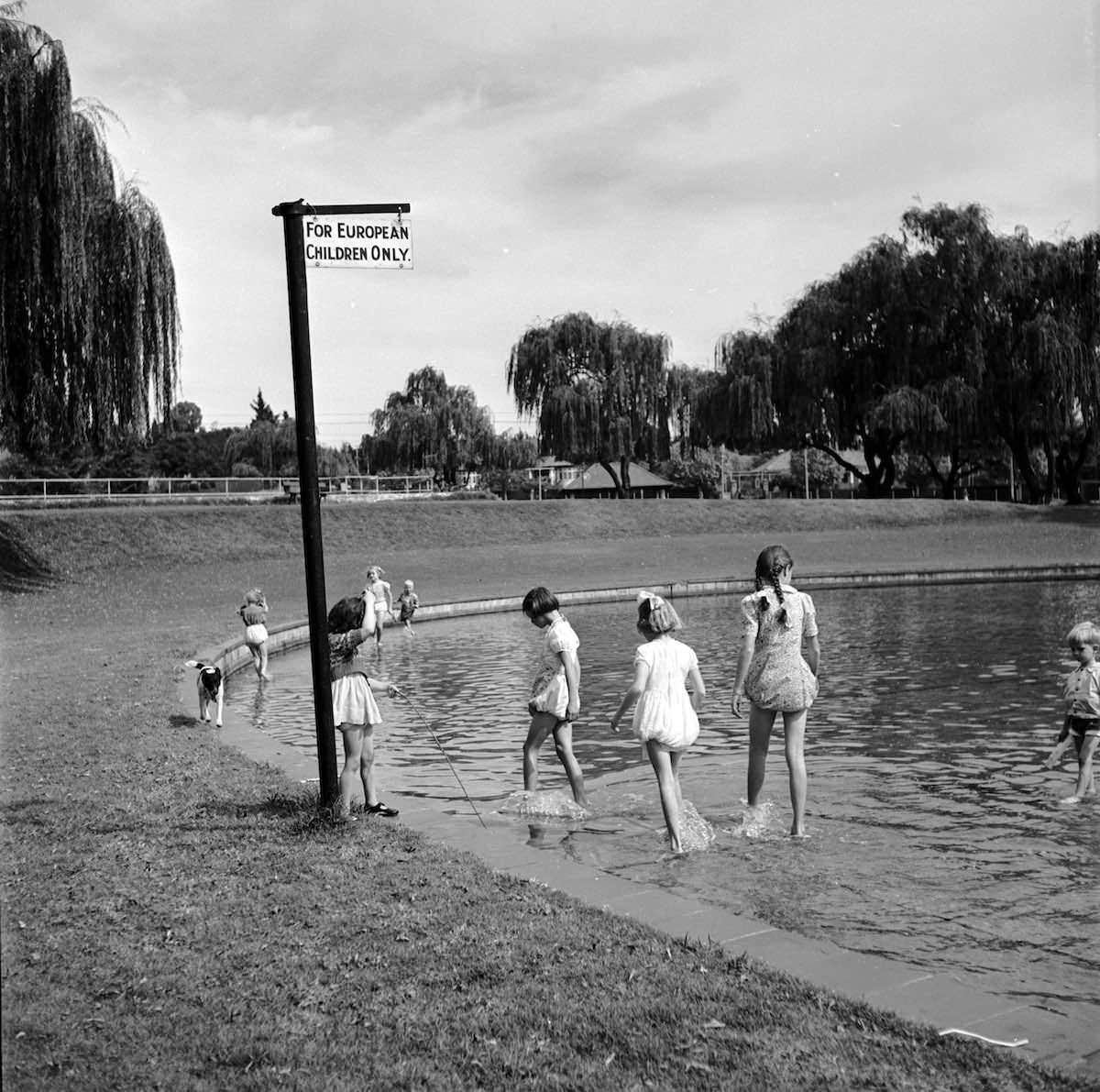 Children play in a pond in a park in South Africa in 1956. The Apartheid created heavy racial segregation, keeping the white minority in supreme control.
Children play in a pond in a park in South Africa in 1956. The Apartheid created heavy racial segregation, keeping the white minority in supreme control. -
5.
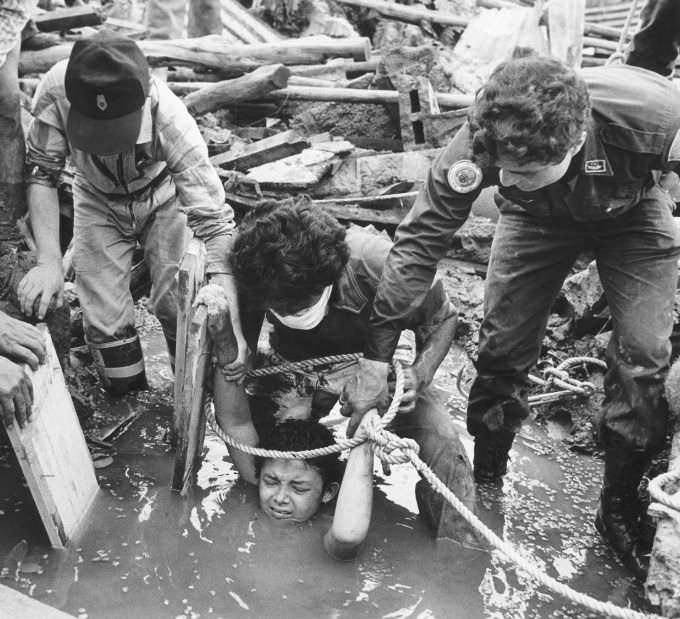 Rescue workers try and break free 13 year old Omayra Sánchez who is stuck in whats left of her house after a lahar hit it after the volcano Nevado del Ruiz erupted in Tolima, Colombia in 1985. Her lower body is trapped in the destroyed concrete, and her feet are actually being tightly gripped by her dead aunt, who was killed with a death grip around Omayra. The workers could not free her without severing her legs, and did not have the proper equipment to surgically save her if they did so. Sadly, they thought the humane thing to do was let her pass out and die from exposure. It took 3 nights and 60 hours, but she did finally succumb. The picture of her with black eyes went around the world. The Colombian government were warned the volcano was about to blow, and did nothing. With no action taken, Omayra and 23,000 other people perished in the disaster.
Rescue workers try and break free 13 year old Omayra Sánchez who is stuck in whats left of her house after a lahar hit it after the volcano Nevado del Ruiz erupted in Tolima, Colombia in 1985. Her lower body is trapped in the destroyed concrete, and her feet are actually being tightly gripped by her dead aunt, who was killed with a death grip around Omayra. The workers could not free her without severing her legs, and did not have the proper equipment to surgically save her if they did so. Sadly, they thought the humane thing to do was let her pass out and die from exposure. It took 3 nights and 60 hours, but she did finally succumb. The picture of her with black eyes went around the world. The Colombian government were warned the volcano was about to blow, and did nothing. With no action taken, Omayra and 23,000 other people perished in the disaster. -
6.
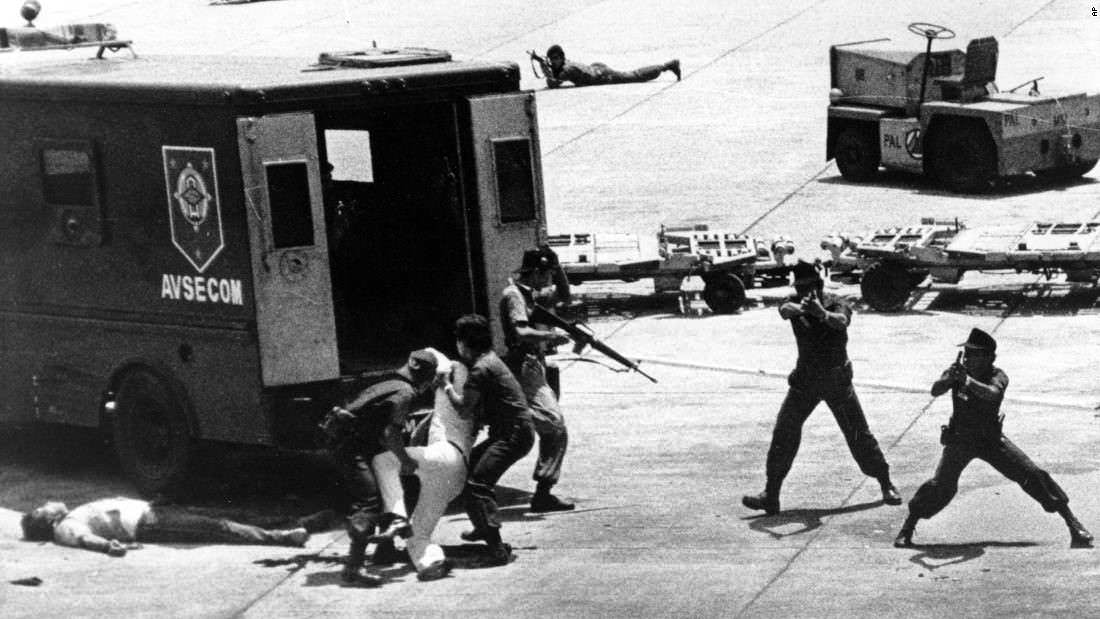 This is the reaction of the surrounding soldiers after the assassination of Benigno Aquino Jr. at the Manila Airport in Manila, Philippines in 1983. The exiled former senator had just returned in an attempt to run for president. Almost immediately after getting off the plane, the assassin walked up to him and shot him in the head. The assassin was killed instantly afterwards. President Ferdinand Marcos was blamed, and this event turned a relatively small movement against Marcos into a big one, and just 3 years later Aquino's wife ran against Marcos. Marcos won under suspicious circumstances and was accused of fraud. The country agreed, and felt he cheated, rose against him, and forced him into exile, drastically changing the political shape of the Philippines.
This is the reaction of the surrounding soldiers after the assassination of Benigno Aquino Jr. at the Manila Airport in Manila, Philippines in 1983. The exiled former senator had just returned in an attempt to run for president. Almost immediately after getting off the plane, the assassin walked up to him and shot him in the head. The assassin was killed instantly afterwards. President Ferdinand Marcos was blamed, and this event turned a relatively small movement against Marcos into a big one, and just 3 years later Aquino's wife ran against Marcos. Marcos won under suspicious circumstances and was accused of fraud. The country agreed, and felt he cheated, rose against him, and forced him into exile, drastically changing the political shape of the Philippines. -
7.
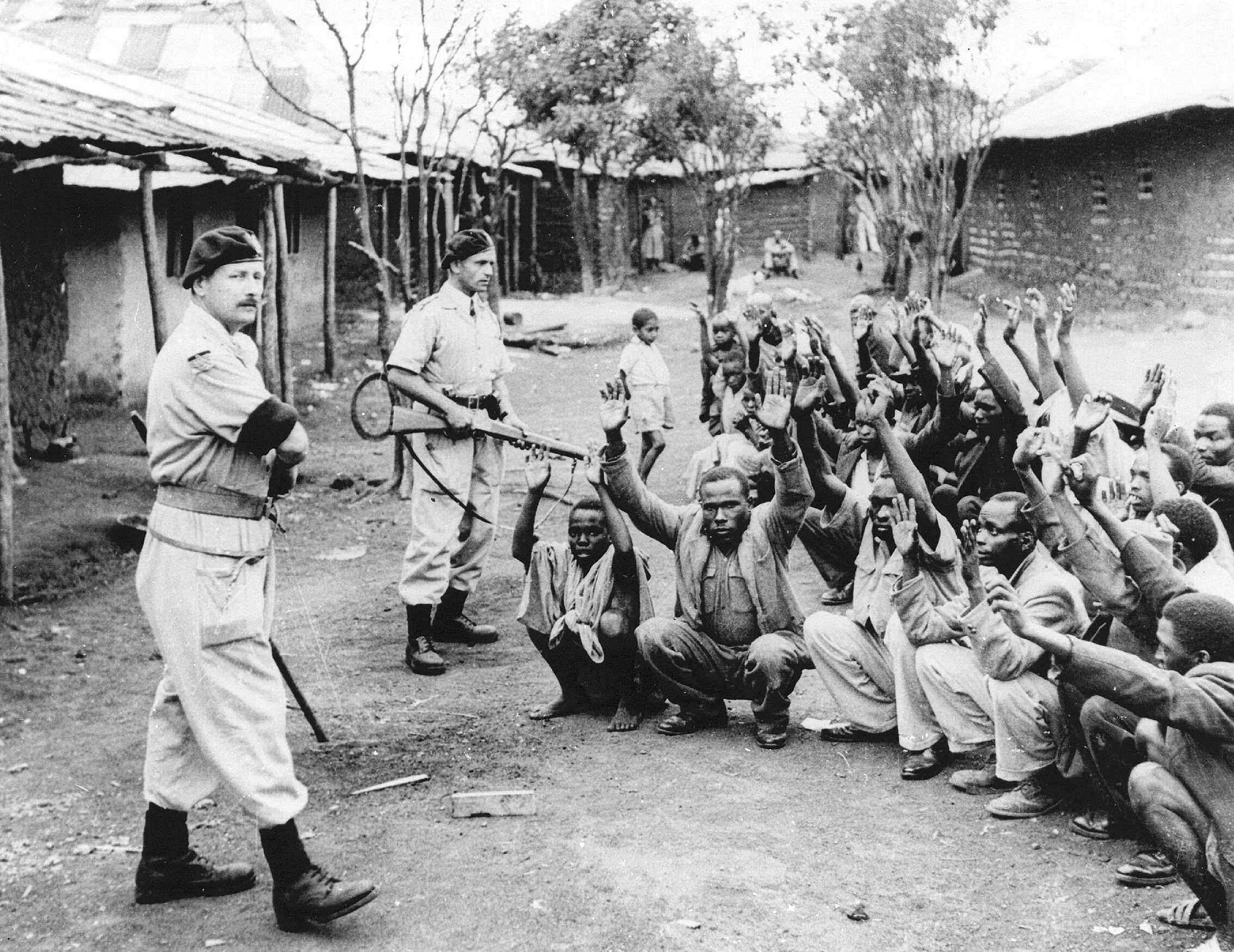 British soldiers question suspected members of the resistance in the Mau Mau Uprising in Kenya in 1955. The uprising lasted just 3 years officially, but proceeded in some capacity from 1952-1960. The Mau Mau were against British rule and the unfair treatment of some Kenyan tribes over others. The British ended up spending too much money to quell the uprising, losing support to keep the colony altogether back home by 1960. In 1963, Kenya became fully independent.
British soldiers question suspected members of the resistance in the Mau Mau Uprising in Kenya in 1955. The uprising lasted just 3 years officially, but proceeded in some capacity from 1952-1960. The Mau Mau were against British rule and the unfair treatment of some Kenyan tribes over others. The British ended up spending too much money to quell the uprising, losing support to keep the colony altogether back home by 1960. In 1963, Kenya became fully independent. -
8.
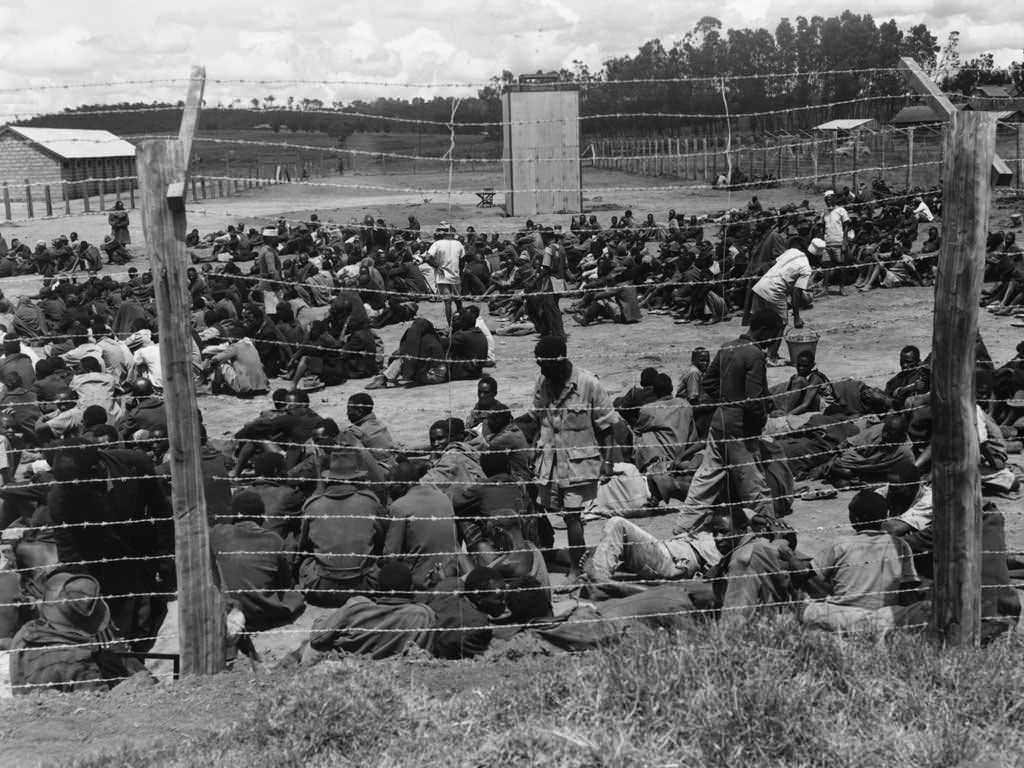 This is a prison camp in Kenya during the Mau Mau Uprising in 1956. The British started rounding up every suspected member of the Mau Mau and placing them in work camps. Men, women, children, they would round them all up, but did not have the manpower to properly feed and interrogate these people. Not long after the uprising began and people were rounded up did the people in the camps have outbreaks of diseases and also began to starve. Officially, the British killed around 12,000 in the fighting, and some 20,000 others dying in the camps. However a nationwide census in 1962 found up to 300,000 Kenyan people missing, possibly all killed.
This is a prison camp in Kenya during the Mau Mau Uprising in 1956. The British started rounding up every suspected member of the Mau Mau and placing them in work camps. Men, women, children, they would round them all up, but did not have the manpower to properly feed and interrogate these people. Not long after the uprising began and people were rounded up did the people in the camps have outbreaks of diseases and also began to starve. Officially, the British killed around 12,000 in the fighting, and some 20,000 others dying in the camps. However a nationwide census in 1962 found up to 300,000 Kenyan people missing, possibly all killed. -
9.
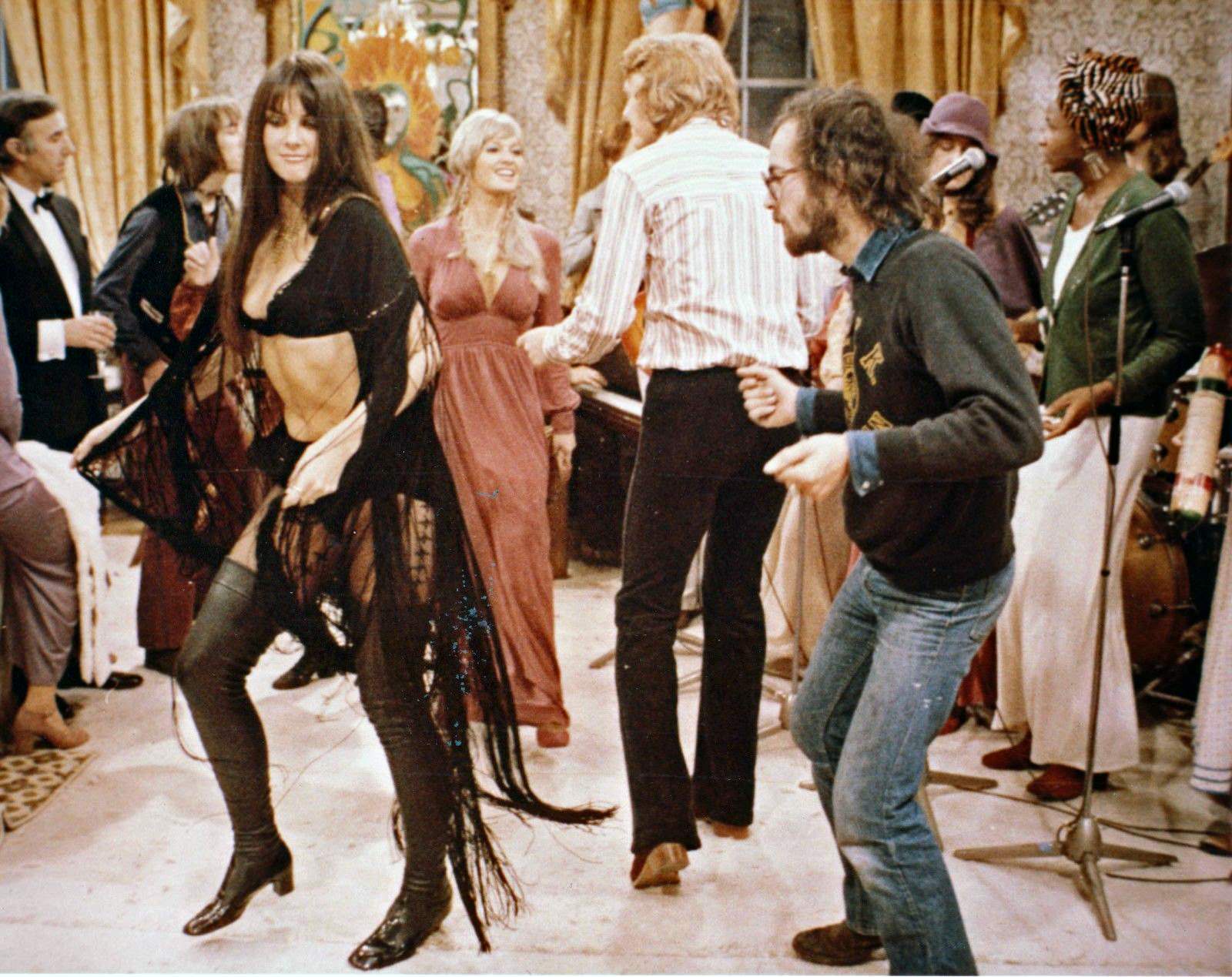 Here is an interesting picture of a dance party somewhere in the US in 1972. Notice the drastic change in fashion from one person to the next, with clear disco looks to rather casual looks to the man in the tuxedo in the back. Before the rise of disco in the mid 1970s, but after the 1960s rock vibe had died down some, for a time the fashion in the US was all over the place with many different styles and looks. The Disco craze changed that and many people adapted to that fashion and music until the early 1980s.
Here is an interesting picture of a dance party somewhere in the US in 1972. Notice the drastic change in fashion from one person to the next, with clear disco looks to rather casual looks to the man in the tuxedo in the back. Before the rise of disco in the mid 1970s, but after the 1960s rock vibe had died down some, for a time the fashion in the US was all over the place with many different styles and looks. The Disco craze changed that and many people adapted to that fashion and music until the early 1980s. -
10.
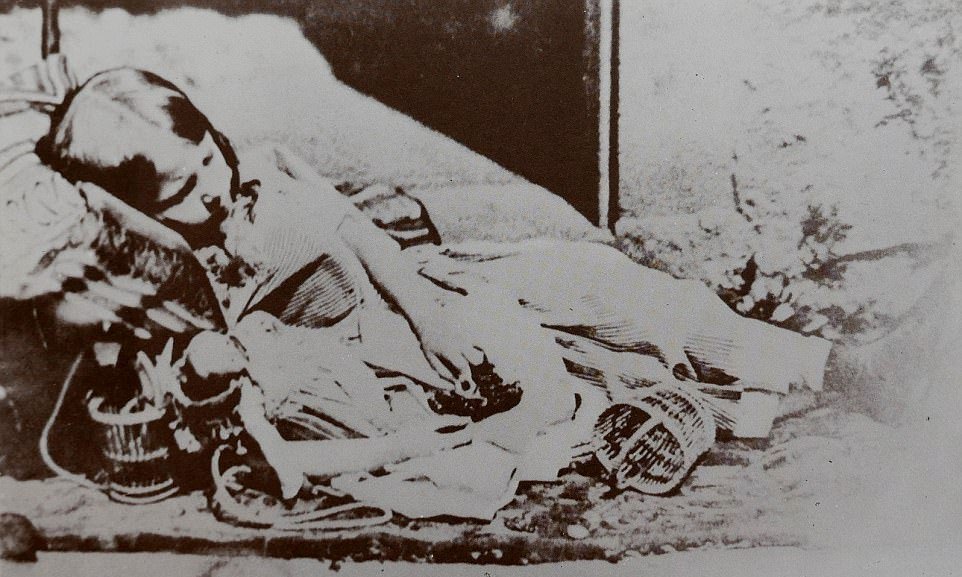 A girl no older than 8 sleeps on some tattered rags alone on a street in London, England in 1890. Hardships, neglect, and abuse at home forced many children to turn to the streets to fend for themselves in the late 1800s and early 1900s. No government programs or public support protected these children, and you would see them in most major cities of the time period.
A girl no older than 8 sleeps on some tattered rags alone on a street in London, England in 1890. Hardships, neglect, and abuse at home forced many children to turn to the streets to fend for themselves in the late 1800s and early 1900s. No government programs or public support protected these children, and you would see them in most major cities of the time period. -
11.
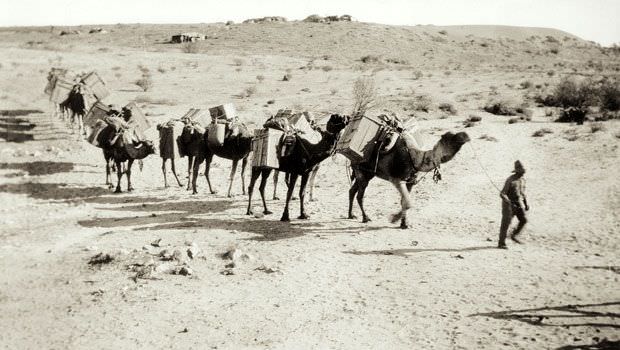 A man leads a group of camels carrying supplies from one town to another in Australia in 1860. Camels are commonly associated with Northern Africa and the desert, but many were brought to Australia before the railroad was built to traverse the Outback far more easily. In fact, Camels were in common use for transportation in Australia right up through the 1950s, with many still in the country to this day.
A man leads a group of camels carrying supplies from one town to another in Australia in 1860. Camels are commonly associated with Northern Africa and the desert, but many were brought to Australia before the railroad was built to traverse the Outback far more easily. In fact, Camels were in common use for transportation in Australia right up through the 1950s, with many still in the country to this day. -
12.
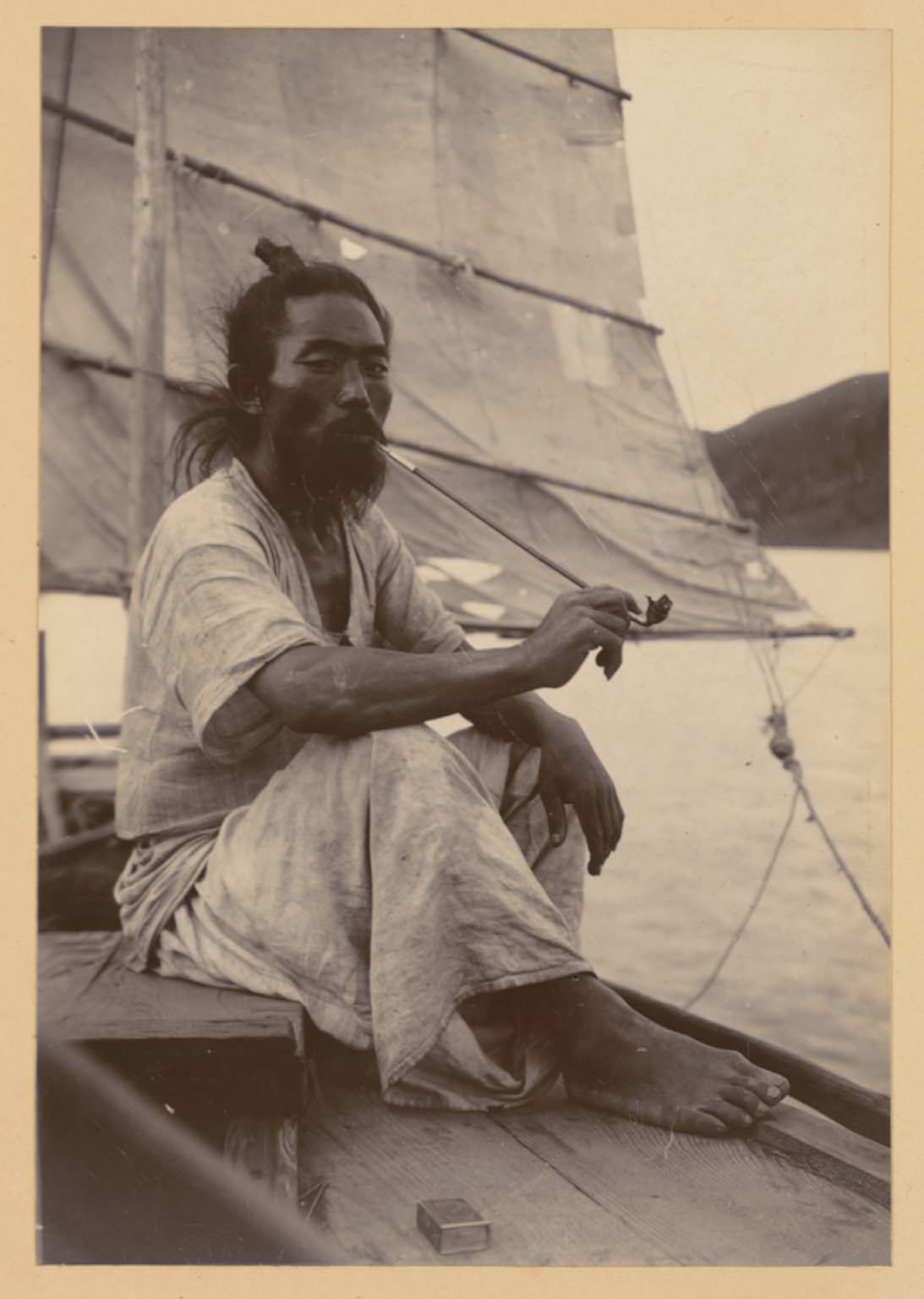 This is a picture of a Korean boatman in 1904. Most of these men were fishermen or traders, using small boats to move around the area to do business. It was a hard life, and dangerous as well as they often had no protection from such things as raiders, thieves, pirates, diseases or even bad storms, which any one of which could cost such a man his life.
This is a picture of a Korean boatman in 1904. Most of these men were fishermen or traders, using small boats to move around the area to do business. It was a hard life, and dangerous as well as they often had no protection from such things as raiders, thieves, pirates, diseases or even bad storms, which any one of which could cost such a man his life. -
13.
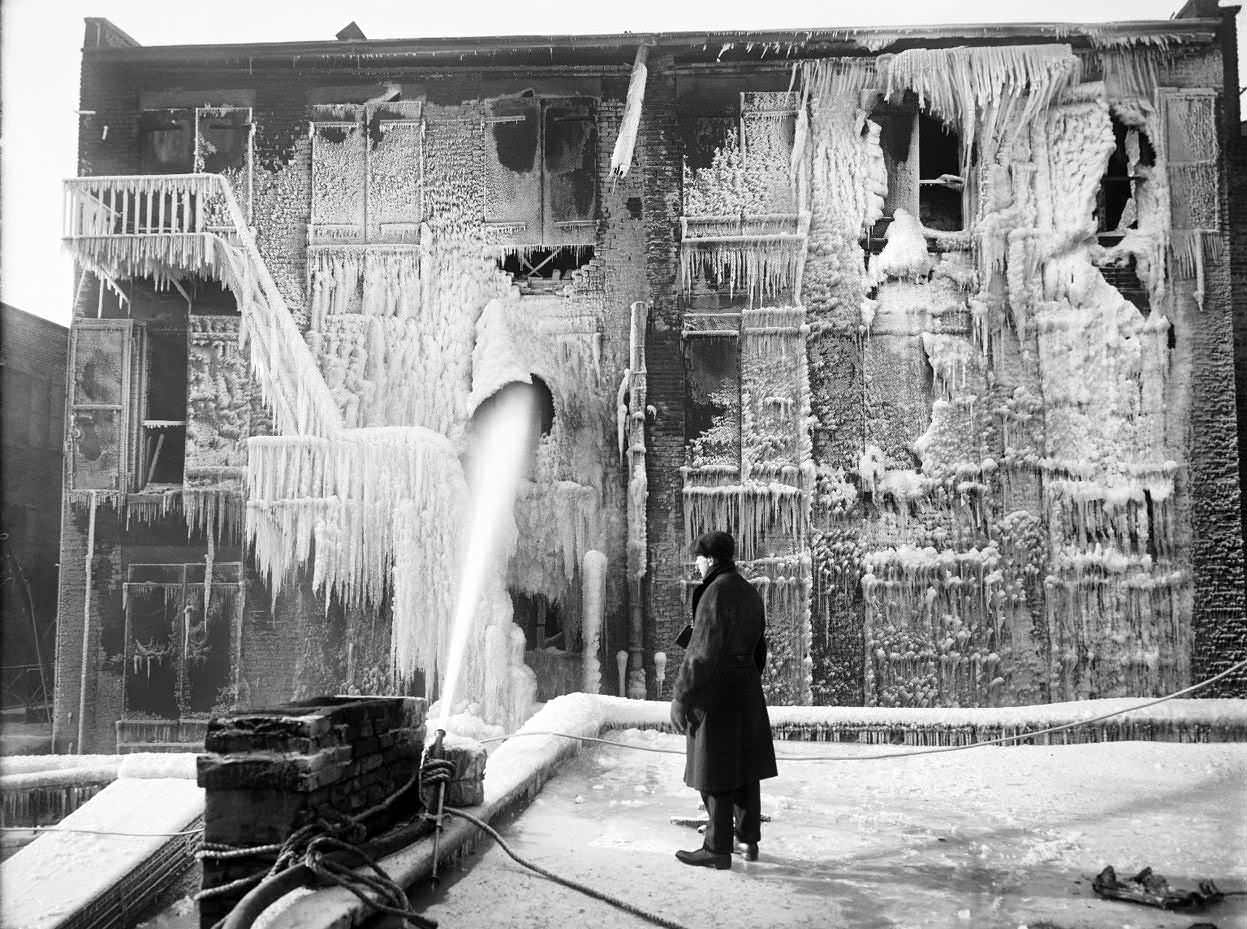 A man looking on as a fire hose makes sure a fire is out in New York City, US in 1917. As you can see, it is so cold out that most of the water almost immediately turned to ice, creating this unique image.
A man looking on as a fire hose makes sure a fire is out in New York City, US in 1917. As you can see, it is so cold out that most of the water almost immediately turned to ice, creating this unique image. -
14.
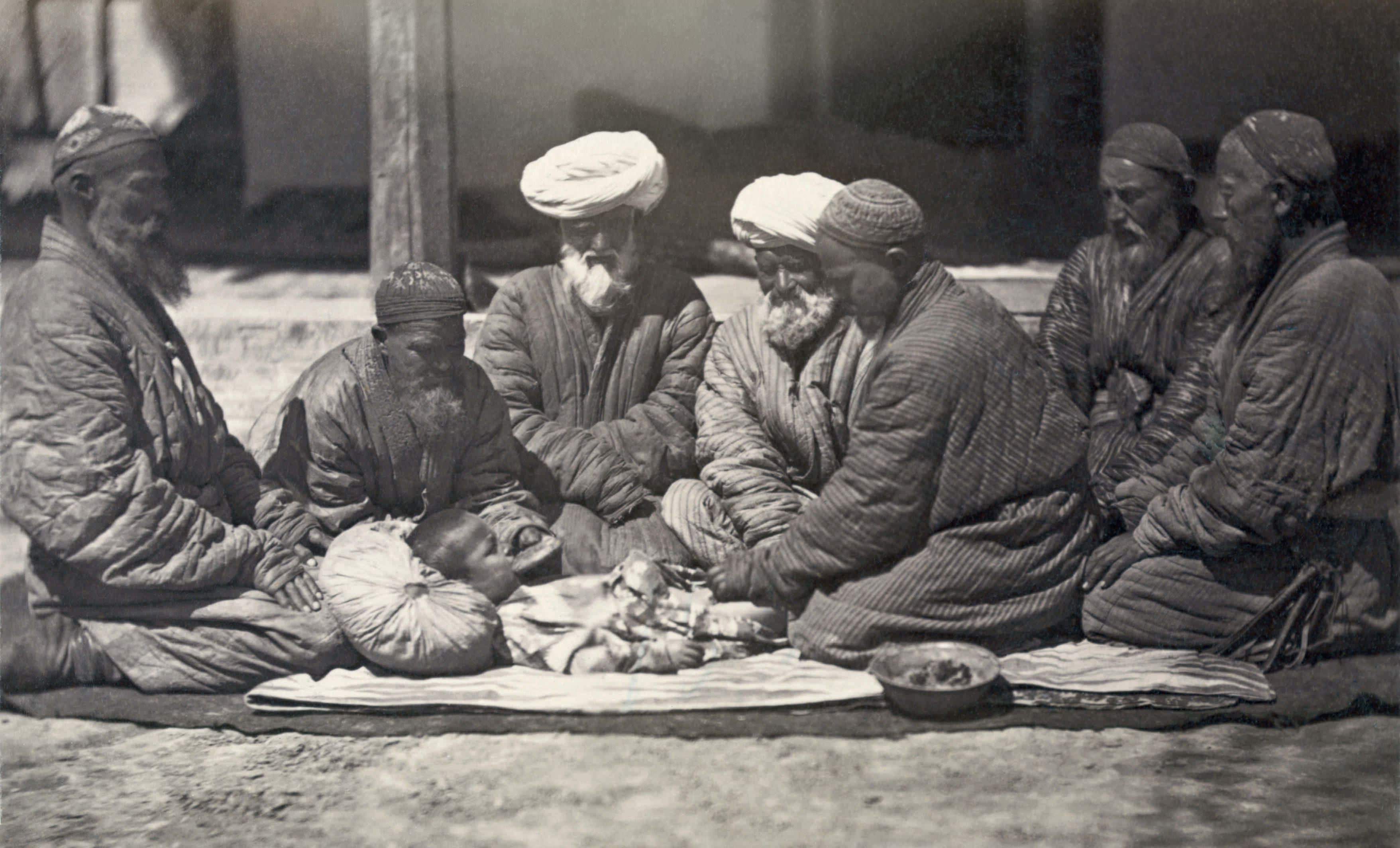 A small child is prepared for a circumcision in central Asia, possibly Turkmenistan, in 1872.
A small child is prepared for a circumcision in central Asia, possibly Turkmenistan, in 1872. -
15.
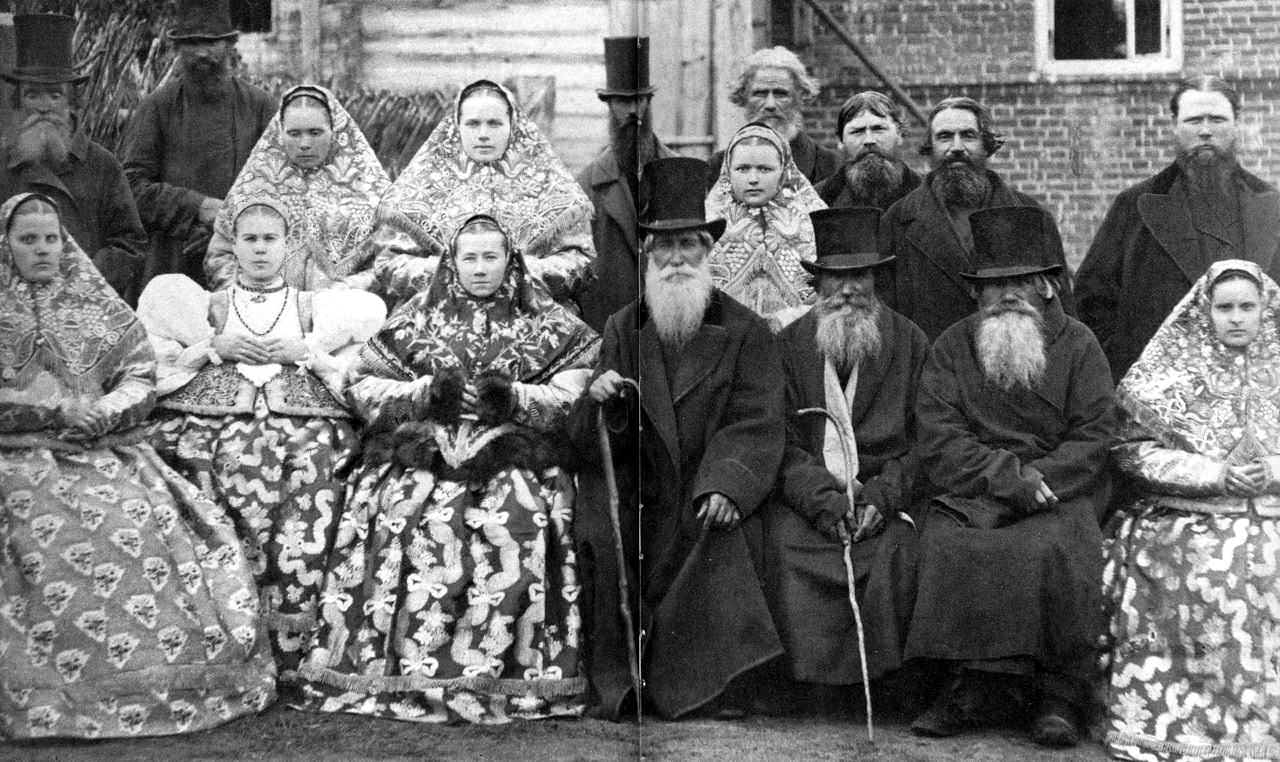 This picture shows men and women somewhere in the Southern part of the Russian empire taken in the early 1900s. Notice how the women are wearing much more traditional Slavic garments while the men all wear more modern attire.
This picture shows men and women somewhere in the Southern part of the Russian empire taken in the early 1900s. Notice how the women are wearing much more traditional Slavic garments while the men all wear more modern attire. -
16.
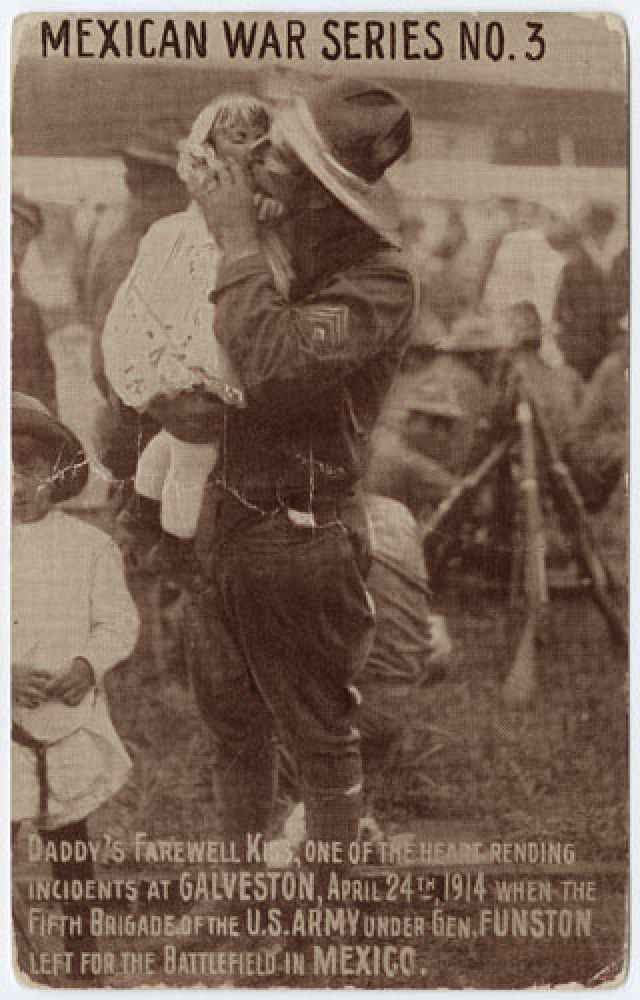 An American trooper kisses his daughter goodbye as he leaves to fight in the Mexican civil war in 1914. The US originally supported the Mexican government, but then switched sides to the rebellion in 1913. The Germans then replaced the US in support of the Mexican government in hopes of distracting some of Europe into that conflict, away from WWI's European theater. The British also supported the rebellion in 1916. The US eventually removed troops and major support as it shifted its focus to WWI, and by 1918 the Mexican rebels were on their own. However they were winning at this point, and the 10 year civil war ended in a rebel victory in 1920, reshaping Mexico.
An American trooper kisses his daughter goodbye as he leaves to fight in the Mexican civil war in 1914. The US originally supported the Mexican government, but then switched sides to the rebellion in 1913. The Germans then replaced the US in support of the Mexican government in hopes of distracting some of Europe into that conflict, away from WWI's European theater. The British also supported the rebellion in 1916. The US eventually removed troops and major support as it shifted its focus to WWI, and by 1918 the Mexican rebels were on their own. However they were winning at this point, and the 10 year civil war ended in a rebel victory in 1920, reshaping Mexico. -
17.
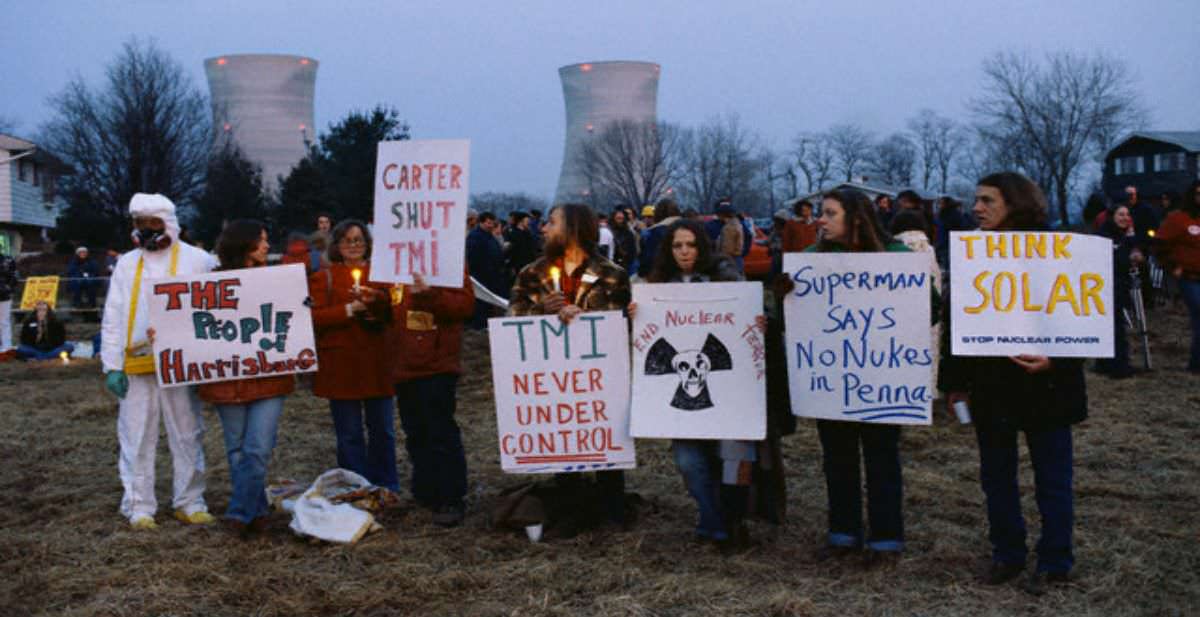 People protesting against any form of nuclear power or weapons after the Three Mile Island accident in Pennsylvania, US in 1979. An accident at the Nuclear Power Plant caused a small release of radiation. The government was unaware of the extent of the leak at first, and did not evacuate people. Up to 500,000 people were close enough to be heavily affected had it been worse, but the government did not know the magnitude of the radiation released within the first 48 hours, and did hardly anything while determining the extent of the incident. This lack of action and understanding of a possible nuclear disaster caused fear and protests for much of the year against anything nuclear. Those fears were realize with the Chernobyl disaster in Soviet Union 7 years later.
People protesting against any form of nuclear power or weapons after the Three Mile Island accident in Pennsylvania, US in 1979. An accident at the Nuclear Power Plant caused a small release of radiation. The government was unaware of the extent of the leak at first, and did not evacuate people. Up to 500,000 people were close enough to be heavily affected had it been worse, but the government did not know the magnitude of the radiation released within the first 48 hours, and did hardly anything while determining the extent of the incident. This lack of action and understanding of a possible nuclear disaster caused fear and protests for much of the year against anything nuclear. Those fears were realize with the Chernobyl disaster in Soviet Union 7 years later. -
18.
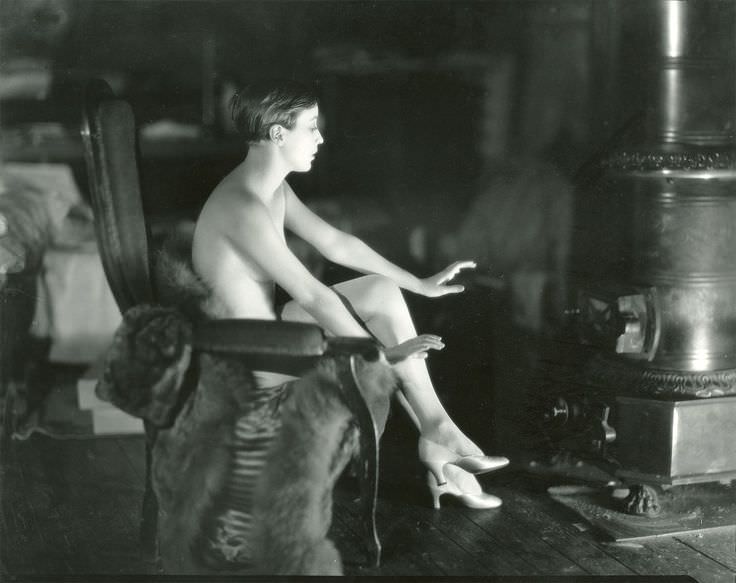 Bessie Love posing for a photo shoot by James Abbe in Paris, France in 1928. Bessie Love was an American silent film star, doing her first work at just 18 in 1916. Towards the end of silent films, Hollywood pushed the limits of sexuality in their films, with mostly just shoulders and legs exposed, but also sheer outfits. Actresses such as Bessie Love also did promotional photo shoots which exposed far more than the films they did. Many photo shoots would show cleavage, be semi nude, or nude in general, where such sights weren't in American films themselves until the late 1960s. Some pictures would be marketed in Europe, in France in particular, to promote American film stars. Other stars and their sexy photo shoots rarely made it to the public. It was a relatively unknown but not that uncommon aspect of early Hollywood and some of the female stars.
Bessie Love posing for a photo shoot by James Abbe in Paris, France in 1928. Bessie Love was an American silent film star, doing her first work at just 18 in 1916. Towards the end of silent films, Hollywood pushed the limits of sexuality in their films, with mostly just shoulders and legs exposed, but also sheer outfits. Actresses such as Bessie Love also did promotional photo shoots which exposed far more than the films they did. Many photo shoots would show cleavage, be semi nude, or nude in general, where such sights weren't in American films themselves until the late 1960s. Some pictures would be marketed in Europe, in France in particular, to promote American film stars. Other stars and their sexy photo shoots rarely made it to the public. It was a relatively unknown but not that uncommon aspect of early Hollywood and some of the female stars. -
19.
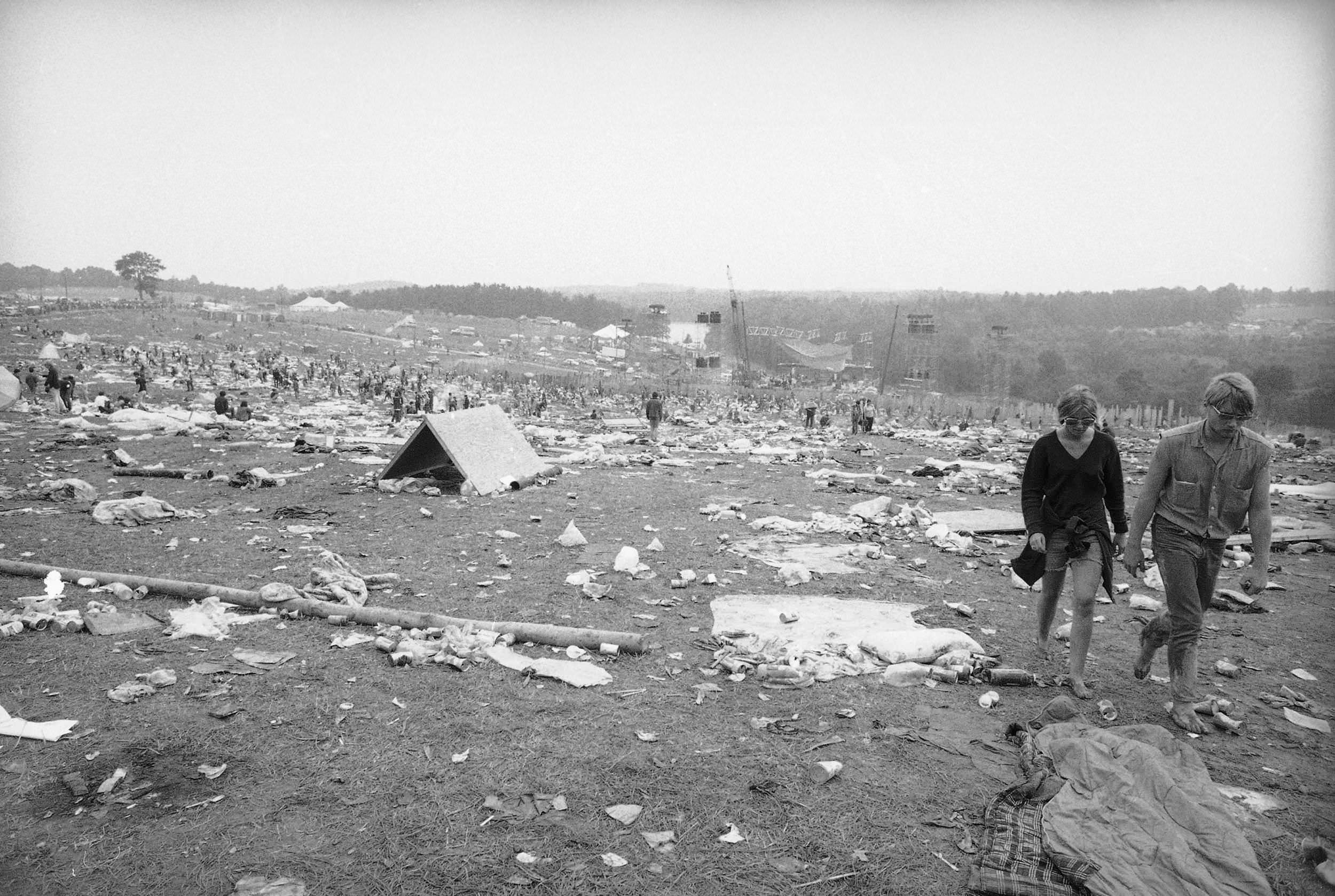 People linger around after the massive Woodstock Festival had ended in New York State, US in 1969. The concert was for 3 days, with up to 400,000 people attending. It was the biggest event of its kind at the time, but it was also poorly organized for the amount of people who attended. Most slept outside, in muddy conditions caused by rain. The dairy farm it was held on was utterly trashed, with it taking months to clean up. People bathed in a small stream nearby, or not at all. Some brought their children, even though heavy drug use was all over the grounds.
People linger around after the massive Woodstock Festival had ended in New York State, US in 1969. The concert was for 3 days, with up to 400,000 people attending. It was the biggest event of its kind at the time, but it was also poorly organized for the amount of people who attended. Most slept outside, in muddy conditions caused by rain. The dairy farm it was held on was utterly trashed, with it taking months to clean up. People bathed in a small stream nearby, or not at all. Some brought their children, even though heavy drug use was all over the grounds.
- REPLAY GALLERY
-

- 19 Fascinating Photos From Our History's Vault
Children play with captured German weapons after the Battle of Stalingrad in Russia in 1943. The biggest battle in human history changes the course of WWII, with the Soviet Union eliminating the entire German Army Group B. The city became a symbol and the battle turned personal among former allies Hitler and Stalin in the war, even though its key location was also important for the German offensive in taking the oil fields south of the city. This made both sides throw more and more soldiers into the battle. Much of the population was killed, as the Soviets stopped evacuations when the Germans got a foothold in the city. These boys most likely are orphans, and could have been pressed into the Soviet Army by the wars end.
19/19
1/19
Categories:
Wow



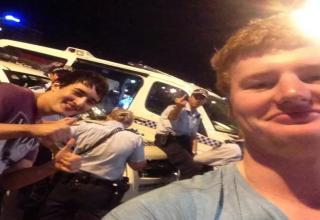
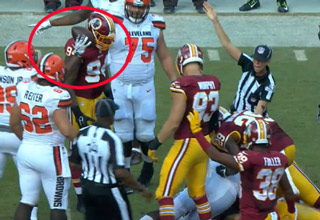


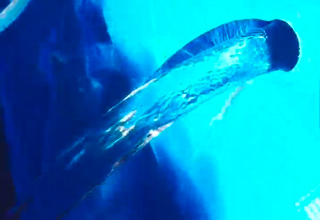
0 Comments